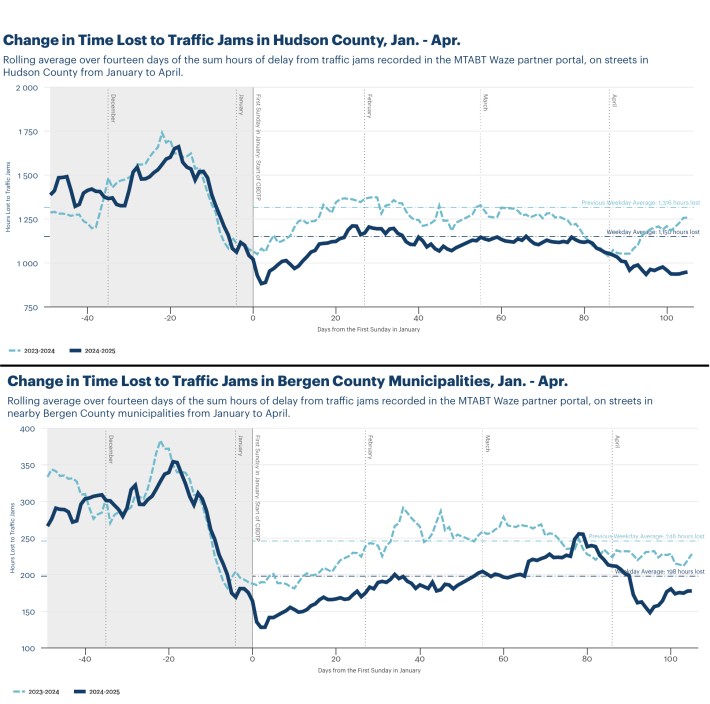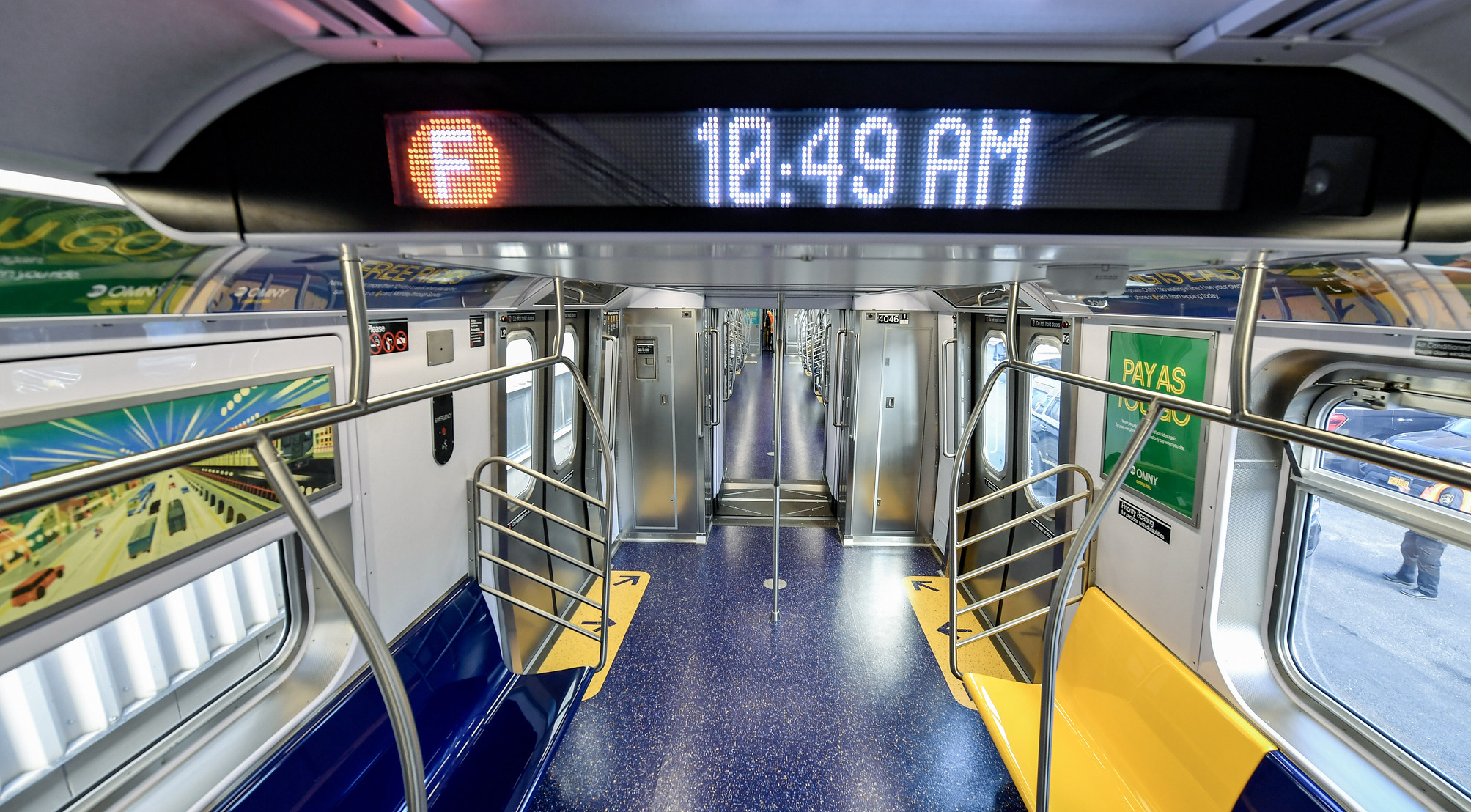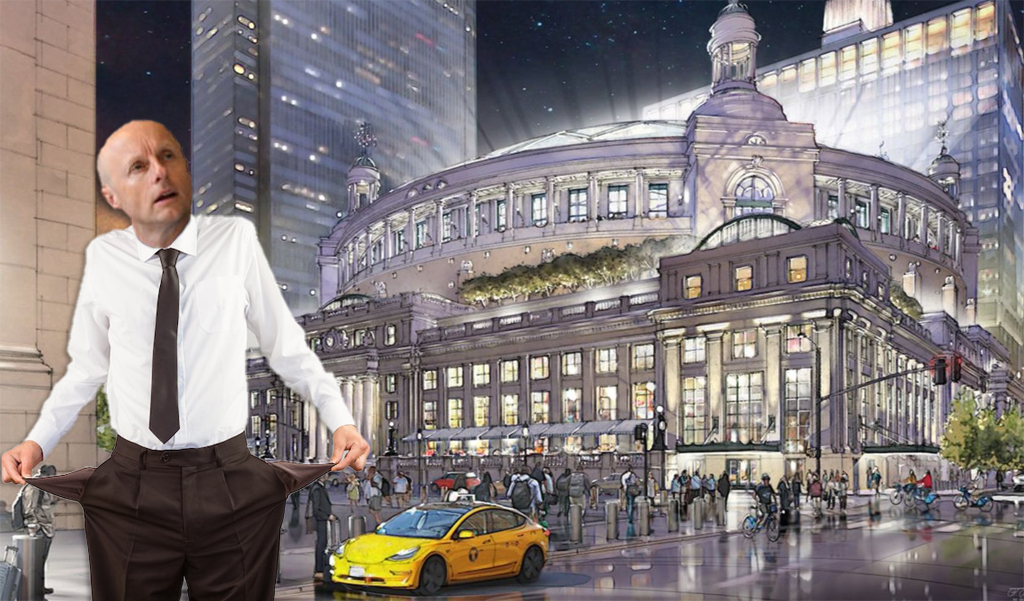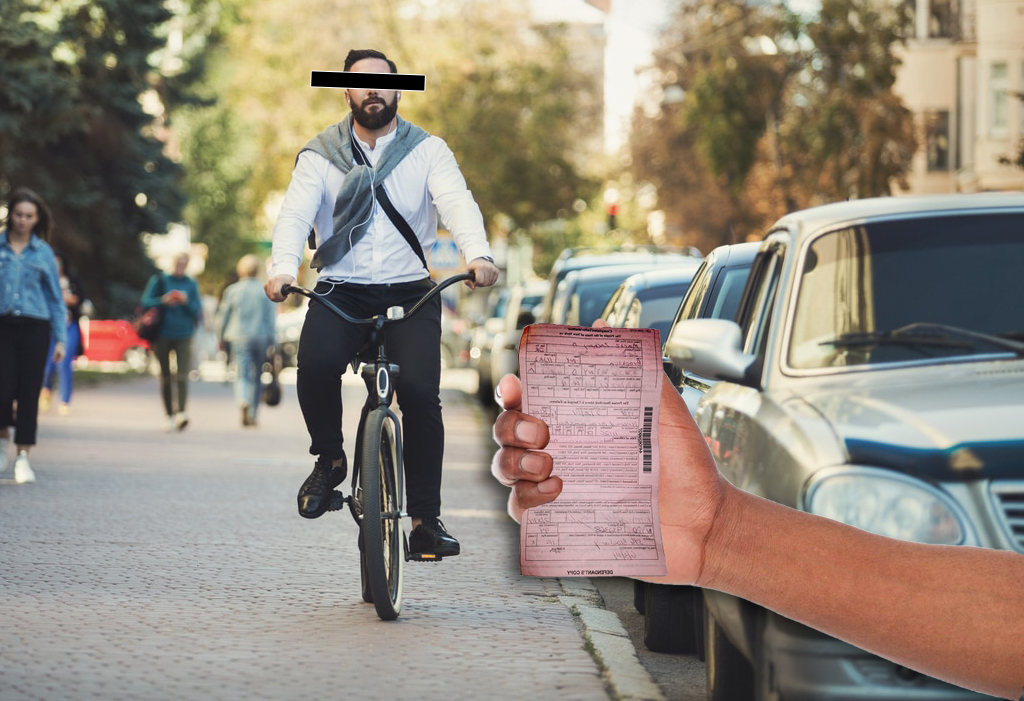Travelers in Manhattan's central business district — and even those far beyond it — have gotten back tens of thousands of hours thanks to fewer traffic jams created since the implementation of congestion pricing.
New research from the Regional Plan Association shows that the $9 peak toll to drive into Manhattan below 59th Street has created cascading benefits across the metropolitan area — a change from when drivers were sitting on the road going nowhere.
“Contrary to pessimistic expectations, the congestion pricing program is not causing traffic to be diverted outside the Congestion Relief Zone," said Rachel Weinberger, an RPA vice president. "Instead, as more people choose transit, trips to Manhattan by car are averted, resulting in less, not more, traffic in the Bronx, Bergen County, and all around the region. We see a reduction in traffic jams and increased overall time savings both within and outside the Zone."
RPA used data from Waze to compare traffic jams, which they defined as when traffic speeds on a given stretch of road drop below baseline traffic speeds, before and after the implementation of congestion pricing on Jan. 5.
Inside Manhattan, the data showed that on average, travelers lost 4,384 hours per weekday to traffic jams in the 2024 analysis period. But the number of "lost" hours dropped to 3,161 on the average weekday since the beginning of the toll, a 28-percent decrease, or the equivalent of travelers getting 17 minutes back per hour spent in traffic compared to 2024.

The data also showed that the post-holiday traffic drop inside Manhattan was larger than in previous years. As the organization noted, after the November/December holiday crunch, traffic on Manhattan streets tends to decline between January and April. Weekday travel delays from early January to late April declined by 21 percent compared to mid-November to early January in both 2023 and 2024. But those same delays dropped by an astounding 40 percent in 2025, thanks to congestion pricing.
The RPA also found that congestion pricing has not just been a benefit to Manhattanites, something that critics of the program said would happen if the toll was implemented.
"Far from being a policy to benefit Manhattanites at the expense of the region, the [toll] has actually resulted in less traffic overall, even in some places that models predicted it could increase," the organization noted.
In the Bronx, for instance, time lost to traffic jams dropped from 2,384 hours per average weekday in the year before congestion pricing to 1,984 hours per average weekday in the period after congestion pricing was implemented, a drop of 17 percent or 10 minutes for every hour drivers were stuck in traffic. Ten percent of that drop was directly attributable to congestion pricing.

This isn't the first analysis that's shown the Bronx has been spared the worst of the traffic outcomes the congestion pricing environmental assessment predicted for it. Early returns have shown that cars and trucks haven't driven through the borough to avoid the toll in Manhattan, and traffic is actually down on the Cross Bronx Expressway this year.
New Jersey drivers and bus riders benefitted from the toll as well. In Bergen County and Hudson County, congestion pricing was responsible for cutting time spent in traffic by 14 percent and 12.8 percent respectively.

MTA Chairman and CEO Janno Lieber celebrated the findings.
"[I]t sounds like it's validating what ... the MTA has been saying, which is by every possible metric, by every standard, congestion pricing is a success," he said. "It is a success by any standard, and the projections that we made about the revenue have turned out to be right on the money. How often does government do – take a big swing on a big, controversial policy initiative and execute it pretty close to perfectly? The results are exactly as projected, and lo and behold, the public notices the benefits almost immediately, that's congestion pricing."
As Lieber noted, the traffic toll has been very successful so far. Traffic crashes are down in lower Manhattan, bus speeds inside and outside of Manhattan are faster, foot traffic in lower Manhattan has risen compared to last year, Broadway just finished its highest-grossing season ever, school buses are making their rounds on time, and, perhaps most important, Knick legend Clyde Frazier loves it.






